Whether it’s for indoor bouldering or outdoor sport climbing, we have a short guide here for about all the essential gear you’ll need to get started climbing and some tips on how to make the right equipment choices from all the options available in the market.

Indoors or outside – the important thing is to start with quality gear. Photo SCARPA
Whether you’ve already begun climbing or just interested in trying, we’re going to give you an idea of what basic gear you’re going to need for your introduction to climbing and what to look for when choosing gear. At the end of each section we’ve included links to more in-depth articles covering the different gear discussed.
- Essential gear for indoor bouldering: Climbing shoes and liquid chalk
- Essential gear for indoor climbing on an auto-belay: Climbing shoes, harness, liquid chalk. Helmet recommended
- Essential gear for indoor and outdoor sport climbing: Climbing shoes, harness, rope, quickdraws, belay device, locking carabiners, helmet, chalk
Now we’ll go through each one individually for beginners:
Climbing Shoes
Although you may be tempted to try climbing with your regular gym shoes, specialized climbing shoes are considered basic kit now for any type of modern climbing. Climbing shoes provide grip on rock or plastic that is far superior to any other type of footwear, and is based on two principles: the quality and composition of the rubber in the sole, and the geometry and fit of the shoe itself, which maximizes the force you can generate with your foot.
If you’re just getting started in climbing, then this article is for you: “Climbing Shoes for Beginners”. Have to look to get a more complete idea of what to look for in a beginner's shoe.
Choose your first shoes with comfort as your first priority and a stiff soleas a second. As you progress in the sport, you’ll get into tight, highly sensitive asymmetric shoes that will allow you to feel and stand up on the smallest of footholds. But to get started you should focus on being comfortable as you learn climbing technique, and some extra support as you develop the muscles in your feet.

Scarpa Reflex, a good beginner’s shoe with a flat sole and foot support
Look for a snug fit that’s not overly tight or painful, but your toes should reach the tip of the shoe. A proper fit leaves no empty space inside the shoe. Your foot should completely fill the inside volume of the shoe or you’ll lose performance.
Climbing Shoes
- Beginner needs: comfort, symmetric, flat profile, some stiffness in the sole for support
- Options: Men’s, women’s (also called “low volume or “LV” sometimes, and can be a good option for men with narrow feet), and kids’.
To learn more:
Harness
In terms of safety there is no difference between an entry-level harness and a top-of-the-line one. All of them are compliant with strict safety regulations and are made with a system of double-back waist buckles for safety and ease of use. The main differences you’ll find are in comfort, weight, and design details for specific activities in more expensive harnesses.
Although there are harnesses on the market with only one gear loop and a single tie-in point, these are strictly for indoor auto-belay systems, which have pre-placed draws or are for top-roping only. In order to get into real sport climbing, you’ll need a harness with multiple gear loops and a belay loop.
There are two basic types of climbing harnesses: sport / gym harnesses and trad / big-wall harnesses . Sport / gym harnesses generally have fixed leg loops with no buckles but rather a self-adjusting elastic band, fewer gear loops, less padding in the waist belt, and a thinner belay loop, all designed to cut down on weight and increase range of movement for indoor and outdoor sport climbing. Generally when getting started you’ll want the first type, which are lighter and usually more economical, making for a good entry-level harness. A wide waist belt is also recommended, which will make the harness more comfortable on your back while hang dogging and belaying. Your first harness doesn’t need to be ultralight. Go for a comfortable, affordable all-rounder.

Camp Energy Harness – a lightweight, affordable harness for entry-level climbers.
If you’re planning from the beginning to do a mix of indoor and outdoor, all year long or even going straight to multi-pitch climbing or mountaineering, then you should consider a trad-type harness with additional padding and adjustable leg loops
Climbing Harnesses
- Beginner’s needs: wide waist belt for better back support
- Options: adjustable or fixed leg loops. One or two waist belt adjustments. Men’s, women’s and kids’ models.
To learn more:
Rope
For your first climbing rope for the climbing wall or your local sport crag, you’ll want a single rope (other types of ropes, such as twin ropes, half ropes, and semi-static canyoning ropes are for more specialized activities). Single ropes are dynamic ropes designed to be used by themselves for climbing, designed to softly catch a fall without injuring the falling climber. They are marked with a circled 1 on each end of the rope.

Edelrid Boa 9'8mm rope – a good beginner’s option
Single ropes come in a wide range of diameters, from the ultra-thin 8.5mm Beal Opera up to 10.5mm beasts such as the Beal Wall Master. All have their pros and cons in terms of durability, cost and handling, but for a good balance for your first rope we suggest something around the 9.8-10mm range . Ropes in this range tend to be quite durable for the price and are easier to control than skinny ropes (which are more likely to slip out of control through a belay device) while you perfect your belay technique.
Rope Length
Most beginner outdoor routes are not over 30m, meaning a 60m rope would be sufficient (remember that for lowering off or rappelling you can only do a route that is half the length of your rope or you won’t be able to get back down). However, for extra safety and also taking into account that over time you may cut off the worn-out ends of your rope, we suggest a 70-80m rope. Lowering off a 30m route with a 60m rope (or one that’s had the ends cut off and is now shorter than 60m) runs the risk of the rope running through your belay device and taking a ground fall. If your plan is strictly to climb indoors, a 40m rope is enough for most artificial walls.
Climbing Rope
- Beginner’s needs: Diameter 9.8-10mm, high percentage of sheath vs core (>40%) or abrasion-resistant treatment or construction for longer life
- Options: length 70-80m
Learn more:
- “How to Choose a Climbing Rope”.
- “Climbing Ropes: Maintenance, Dangers and Precautions”.
Belay Device
The type of belay device you’ll need depends on the rope you’re using and the type of climbing you’re going to do. Generally, to start out as mentioned above you’ll most likely be climbing at a gym or outdoor sport climbing area with a single rope. If that’s the case we’d recommend an assisted-braking device such as the ubiquitous Petzl Grigri for getting started. They are very safe and intuitive to use, and there are other options on the market aside from the Grigri.
Particularly the Grigri+ version is a good option for beginning belayers, as it has some added safety features not found on the standard version. For example, the lowering handle has an anti-panic release in case the lowering speed gets out of control. The Grigri+ also has a top-rope mode, which allows slack to be taken in more quickly while belaying on top rope.

Top-rope mode allows slack to be taken in more quickly while climbing on top rope. Photo Petzl.
Other similar assisted braking devices are the Wild Country Revo, which can loaded in either direction, unlike the Grigri, which only works if the rope is loaded in the right direction. Another option is the Edelrid Eddy, which is compatible with a wide range of rope diameters, or the CAMP Matik , which provides a more dynamic catch than other assisted-braking devices.
Belay Devices
- Beginner needs: simple, intuitive design. Assisted braking.
- Optional: Anti-panic function, top-rope mode.
To learn more:
Locking Carabiners
Carabiners or karabiners with a “k,” also knows as “biners,” “krabs" or "crabs.” You’ll need a locking version in order to connect your belay device to your harness, as well as to clip into an outdoor sport anchor with your lanyard. If the number of different options for ropes was staggering, the different types of carabiner shapes, sizes, and closure types can be overwhelming.
The carabiners used for belaying and for building / cleaning anchors have a lock because the strength of an open carabiner is one third that of the same carabiner when closed. This loss of strength is so significant that we can’t risk an involuntary opening. You must always use locking carabiners during critical maneuvers such as belaying and anchor cleaning.
There are different types of locking carabiners. First, there are screw-lock carabiners , which have a manual sleeve that the user screws onto the carabiner gate to lock it. Second there areauto-lock carabiners , which use different mechanisms (generally springs, but there are also models that use magnets) to automatically lock the carabiner when closed. Both systems are valid and have their pros and cons.

Edelrid Pure Screw screw-lock carabiner
If you’re using a cam-based belay device such as a Grigri, where the carabiner isn’t actually in contact with the rope, an asymmetric D-type carabiner is recommended for attaching the device to your harness, as this shape helps keep your carabiner in the correct position and not rotating, which reduces its effective strength. If you are going to be using a more classic tube-style belay device (Black Diamond ATC, Petzl Reverso, or Edelrid Megajul, for example), where the carabiner is in direct contact with the rope, then you’ll want a symmetric HMS “pear-shaped” carabiner There are also a number of specially designed belaying carabiners, with anti-rotation mechanisms that provide additional safety while belaying by keeping the carabiner in the rigth position.
For your belay loop , a carabiner on the larger end is more convenient, making it easier to handle in general and to attach to your belay loop. This is also the carabiner that is most often opened and closed in all of climbing, and an auto-locking carabiner is often recommended for this job to avoid human error. For your lanyard , a smaller carabiner is ideal and will fit easier into hangers and belay stations.
Locking Carabiners
- Beginner’s needs: ease of use, not too small
- Options: Asymmetric or HMS, screw-lock or auto-lock
To learn more:
Quickdraws
Quickdraws are a pair of carabiners connected by a sewn sling in the middle called a “dogbone,” and are used to connect your rope to the bolts drilled into the climbing wall or rock and reducing the length of a fall in case you come off the wall. Generally the carabiner on the bolt side is straight and on the rope side is curved to facilitate clipping the rope.
Quickdraws come in different lengths, determined by the length of the dogbone. For sport climbing generally 12cm draws are enough, though we also recommend you have a few 18cm or even 25cm draws as well for reducing rope drag on zigzagging routes and avoiding bad carabiner positions on ledges and outcrops.
Dogbones can be either nylon and polyester or Dyneema. Nylon dogbones are wider and cheaper, but heavier, while the Dyneema ones are narrow and light, but more expensive. As weight is not a critical issue for sport climbing (especially at lower grades), we recommend nylon dogbones. In addition to being less expensive, the wide dogbone is stiffer, making clipping easier, and also handy to grab onto if you need some extra help clipping. Although considered “cheating” in sport climbing, it’s a move that you’ll surely make at some point in your climbing career.

Wild Country Session Quickdraw: an affordable entry-level option.
Choose a model with solid keylock gates, which make clipping easier and prevent the rope and bolts from getting snagged. For a beginning sport rack you should get a set of around twelve quickdraws. That will be enough for most sport routes, including bolts and anchor and for setting up top ropes if desired. Many brands offer packs of five or six sport draws that are cheaper than the individual draws, so with two packs and couple additional longer draws you will be ready to go.
Quickdraws
- Beginner’s needs: solid keylock gates, wide dogbones, mix of lengths, at least twelve total
Learn more:
Helmet
A helmet, especially for outdoor rock climbing, is an essential piece of equipment that should be worn at all times. A helmet will not only protect in a case of a fall, but also in case of falling rocks or dropped gear while you’re belaying or standing at the base of the wall, hazards that are more common than you may think at first. In terms of protection, there is no difference between a cheaper entry-level helmet and a top-of-the-line one. However, cheaper helmets are heavier and more poorly ventilated compared to more expensive models, and the added discomfort may tempt you to remove your helmet at times. No helmet does any good if it’s not on your head, so be sure to find the right balance for you and your budget between comfort and price , as you may be spending long hours with it on.

CAMP Storm helmet—lightweight, ventilated and durable
Climbing Helmets
- Beginner needs: the lighter and more ventilated, the less tempted you’ll be take it off
- Option: lightweight materials. Men’s, women’s and kids’ models
To learn more:
Lanyard
A lanyard is made up of a length of rope generally around 40-100cm, which is connected to your harness’s belay loop and used for a number of different maneuvers in climbing, the most basic of which is to attach yourself to a sport climbing anchor while you thread the rope for lowering. Lanyards are also helpful for anchoring yourself at the belay if it’s on an exposed ledge, or for resting during a climb by clipping into a bolt. Adjustable-length lanyards made with dynamic rope and sewn loops on each end such as the Petzl Adjust or Camp Swing are replacing other anchoring solutions used in the past such as a daisy chain or personal anchor system (PAS), which are not designed to absorb the kind of falls that can happen in these scenarios. Under a 2018 EU regulation, only lanyards made with dynamic rope that can absorb energy in case of a fall are certified for this purpose. For more information on that topic, you can read our article “Lanyards: Are you using a certified lanyard or a dangerous piece of equipment?”
Lanyard
- Beginner’s needs: nothing particular.
- Options: fixed or adjustable length
Climbing Chalk
Chalk is used to absorb the sweat from your hands, which can have quite an impact on your grip. Climbing chalk comes in two types: liquid chalk, which has become popular now for indoor use given how dirty and bothersome powdered chalk is indoors, and classic powdered chalk for use outside only. The white marks left on the rock by chalk also has a negative visual impact, and there are some brands making rock-colored chalk for different types of rock that blends in better than the standard white chalk.
The differences in chalk quality vs. price and composition come down to personal preference, whether you prefer fine or chunky or a particular texture. Some brands include additives such as resin , which is stickier than chalk and can help increase grip. You’ll just have to try some different one out and see what you like the best.
If you’re going to climb outside, you can use powdered chalk, but you’ll need a chalk bag to hold it in. There are smaller chalk bags that strap to your back for carrying while you sport climb, and larger bags for bouldering that sit upright and stay on the ground while you climb a boulder problem.
Climbing Chalk
- Beginner’s needs: something affordable, liquid for indoor, powdered chalk and chalkbag for outdoor
- Options: powder vs. block, eco-friendly colors, additives.
We hope you’ve learned something from this article. Be sure to visit our online shop for all your climbing needs and contact our customer service department for any further questions on climbing gear.
Online shop: www.barrabes.com/en-gb/







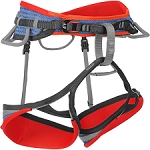

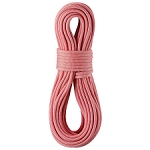

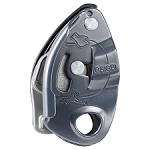

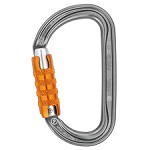

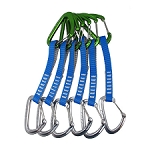


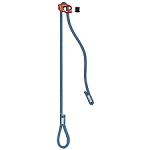





Leave a comment
Be the first to comment on this article.